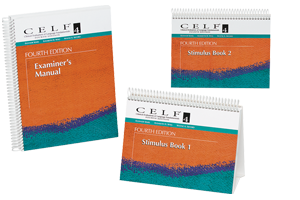Quickly and accurately identify and diagnose language disorders. CELF-5 now available
CELF-4 is being retired and will no longer be available after November 21, 2025. CELF-5 is now available—upgrade today to ensure you're using the most current version.
CELF-4 is being retired and will no longer be available after November 21, 2025. CELF-5 is now available—upgrade today to ensure you're using the most current version.
CELF-4 is being retired and will no longer be available after November 21, 2025. CELF-5 is now available—upgrade today to ensure you're using the most current version.
Clinical Evaluation of Language Fundamentals - Fourth Edition
CELF - 4
Quickly and accurately identify and diagnose language disorders. CELF-5 now availableCELF-4 is being retired and will no longer be available after November 21, 2025. CELF-5 is now available—upgrade today to ensure you're using the most current version.